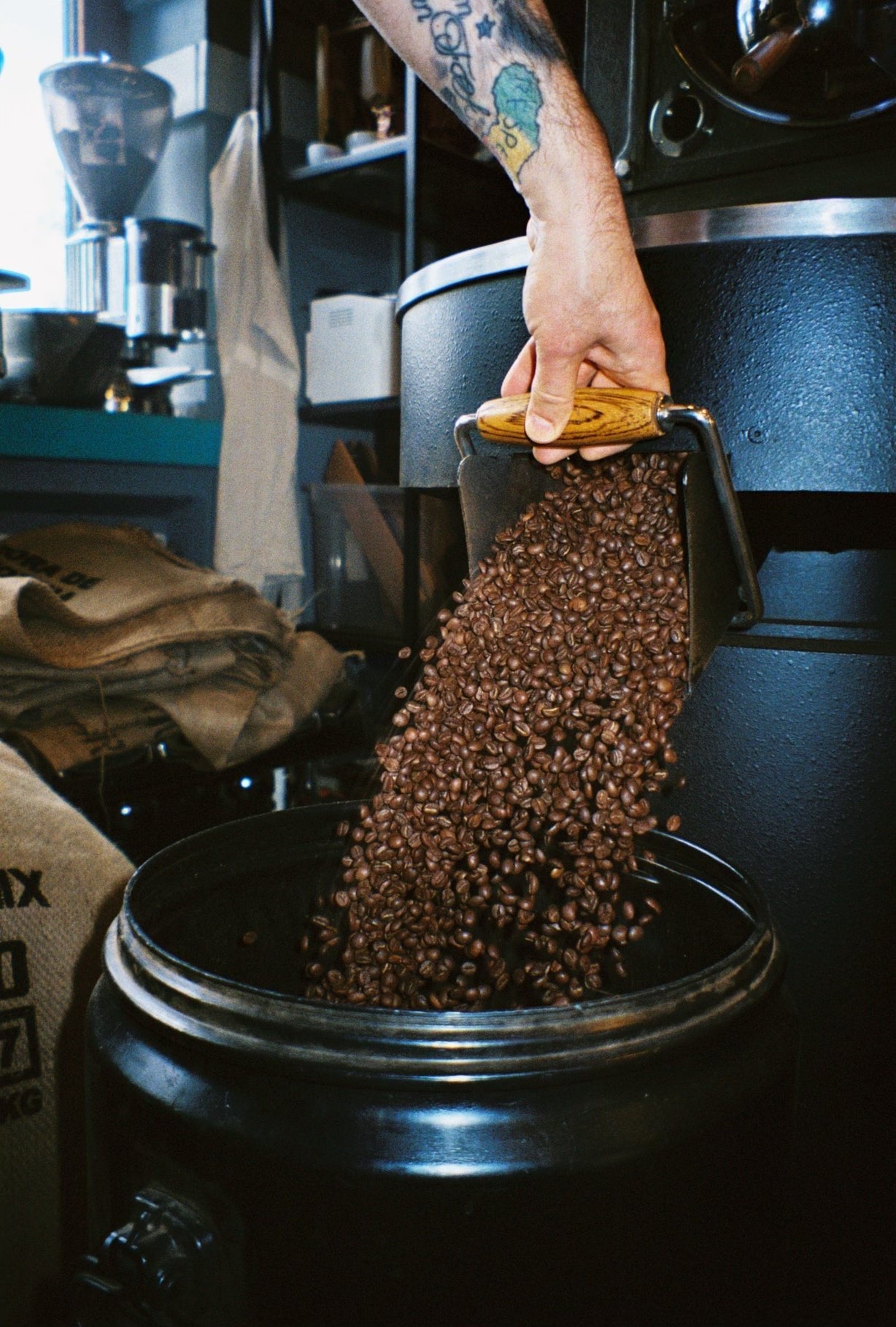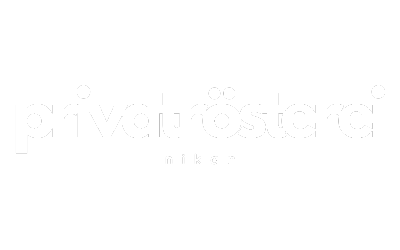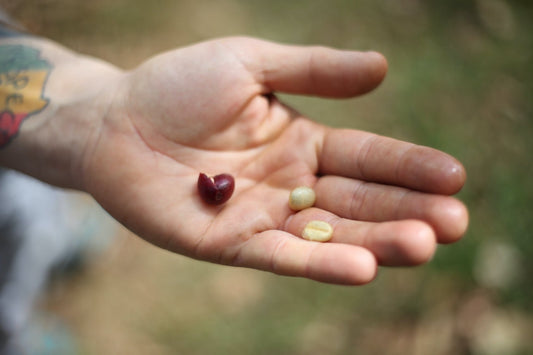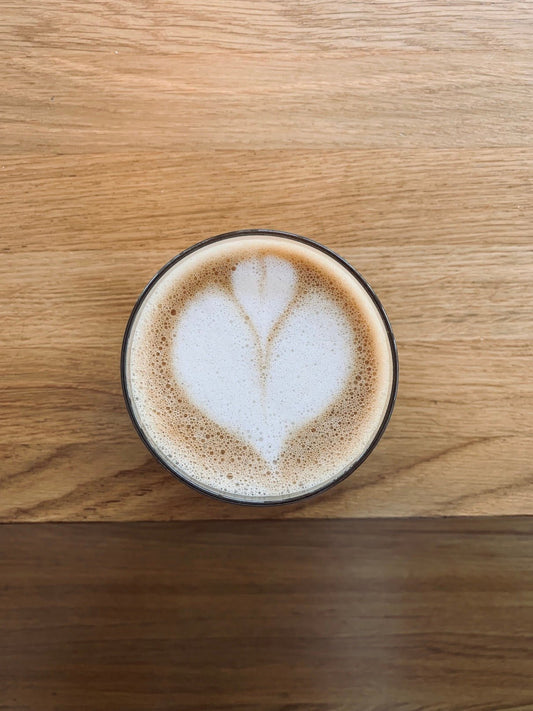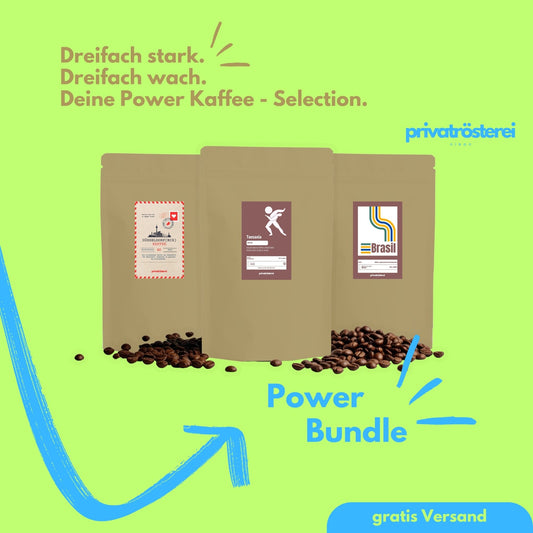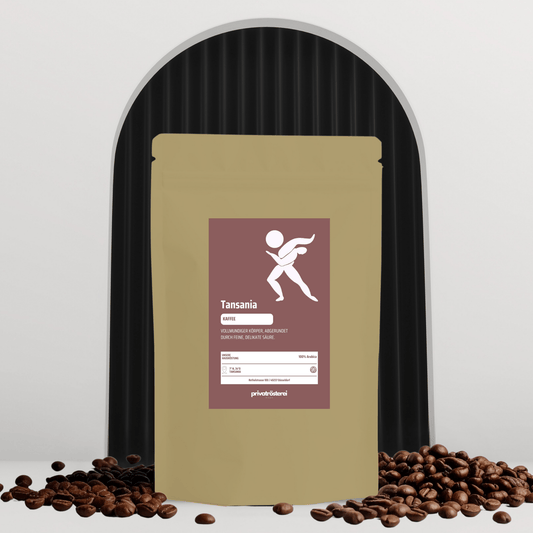Espresso is a small coffee drink that was said to have first been consumed in Milan around 1900. In espresso, hot water is forced through very finely ground coffee at high pressure.
The right bean: Which should I use?
Arabica and Robusta beans are particularly well-suited for espresso. Typically, however, a higher proportion of Robusta beans is used because they give the espresso its necessary density and rich color. We recommend our India Espresso . Arabica beans, on the other hand, are considered more aromatic. Traditionally, the darker and longer the coffee blend is roasted, the better, because the beans lose caffeic acid during roasting. This way, you don't run the risk of your espresso tasting unpleasantly sour. However, every roaster has their own secret recipe for roasting espresso beans to achieve an incomparably individual flavor.
Due to their particularly strong roast, the finely ground beans initially have less caffeine than the ground coffee used for a regular cup of coffee. However, because espresso is prepared with less water than regular coffee, the caffeine concentration is ultimately higher. You can tell this from the espresso's rich, nut-brown color and thick crema.
Buy ground coffee or have it ground: Which grind is right for an espresso?
The bean grind should be particularly fine. At our roastery on Rethelstraße, we prepare your coffee beans fresh on-site to the perfect grind, and you can also order pre-ground beans from our online shop . If you grind your own coffee, make sure you set the grind correctly. We can also provide you with useful tips for this. Otherwise, the rule is: experiment. The coffee itself can be a good guide. If it tastes too acidic, you should adjust the grind a little finer. If, on the other hand, it tastes bitter, you can grind it a little coarser.
With this foundation, we can now begin preparing your espresso. We'll show you how to make the perfect espresso at home.
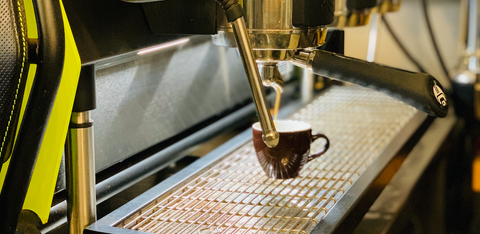
Espresso preparation – How do I prepare an espresso in a portafilter machine?
Step 1: Prepare coffee grounds for the portafilter machine
For one cup of espresso, you need approximately seven to nine grams of ground beans, also known as coffee grounds. This corresponds to about one heaped tablespoon. You can use more if you like your espresso even stronger.
Now distribute your espresso grounds evenly in the portafilter of your portafilter machine and press them firmly against the base of the portafilter using a tamper . This is crucial to prevent the water used to brew the espresso from seeping through the grounds too quickly. This way, as many aromas as possible are released and transported directly into your espresso cup.
Step 2: Brew your espresso
So, in the second step, attach the filled portafilter to the machine and off you go. From now on, the machine will take care of the rest by boiling water and forcing it through the portafilter at high pressure. Traditionally, about 25 to 30 ml of boiling water is used for a small cup of espresso.
Ideally, the brewing process takes between 25 and 30 seconds .
Step 3: Serve espresso
Espresso is usually served in small cups or small double-walled glasses. Coffee connoisseurs usually warm the small cups or glasses beforehand to prevent the coffee from cooling down too quickly.
In Italy, Spain and Portugal, espresso is traditionally drunk unsweetened and without milk or cream, but with a small glass of water.
Your espresso is ready.
Making espresso with an espresso maker - How to do it!
Don't have a portafilter machine, but do have an espresso maker? No problem! We have simple instructions for you on how to make espresso at home. Your espresso is just four steps away.
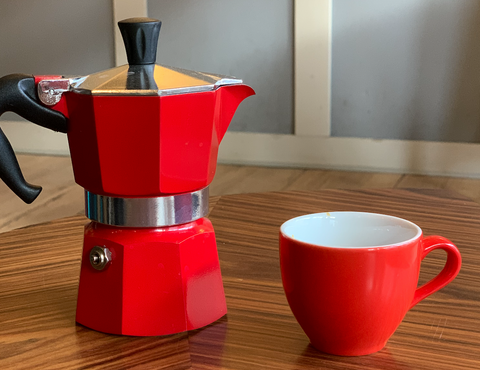
Step 1: Preheat water
Many instructions will tell you to heat the water for your espresso directly in your espresso maker. However, we recommend preheating it in your kettle. This prevents the water in the metal jug from overheating, which would impart a bitter, metallic taste to your coffee. Furthermore, the coffee grounds would be exposed to excessive heat before brewing, quickly developing a burnt flavor. Therefore, it's better to boil the water first and then pour it into the espresso maker.
Step 2: Grind your coffee or use ready-ground coffee grounds
While your water is preheating, you can start preparing your coffee grounds. If you already have pre-ground coffee, even better. Then skip straight to step 3. If you bought whole beans, let's get started on grinding. Fill your coffee grinder with your desired amount of coffee beans (you'll need about 7-9 grams of ground coffee for one cup of espresso). Set it to a medium grind.
Tip: Depending on your grinder, you may need to test the grind setting a bit. Observe how quickly the coffee flows out of the small opening in the espresso maker. If it bubbles uncontrollably, the ground coffee was too coarse. If it oozes out very slowly, it was a bit too fine.
Step 3: Brew your espresso
Now fill the espresso maker's filter with your coarser ground coffee until it's completely full. Pour the preheated water into the espresso maker's water reservoir until it's just below the valve. Now place the coffee-filled filter on top of the water reservoir.
Now it's showtime for your stove. Set the heat to medium to high; this is perfectly adequate for your espresso maker. Don't leave the stovetop; after just a few minutes, your espresso will be ready to enjoy. You'll know your espresso is ready by a slight fizzing sound escaping from your espresso maker.
Now quickly cool the bottom part of the pot, where the water used to be, under running water from your faucet to stop the brewing process. This will prevent unpleasant, burnt flavors in your espresso.
Step 4: Serve espresso
It's best to serve your espresso in small cups or small double-walled glasses. You can also warm the cups or glasses beforehand. This way, you can prevent your espresso from cooling down too quickly. Then, enjoy.
Tip: With a little frothed milk, you can easily prepare a delicious cappuccino at home.
